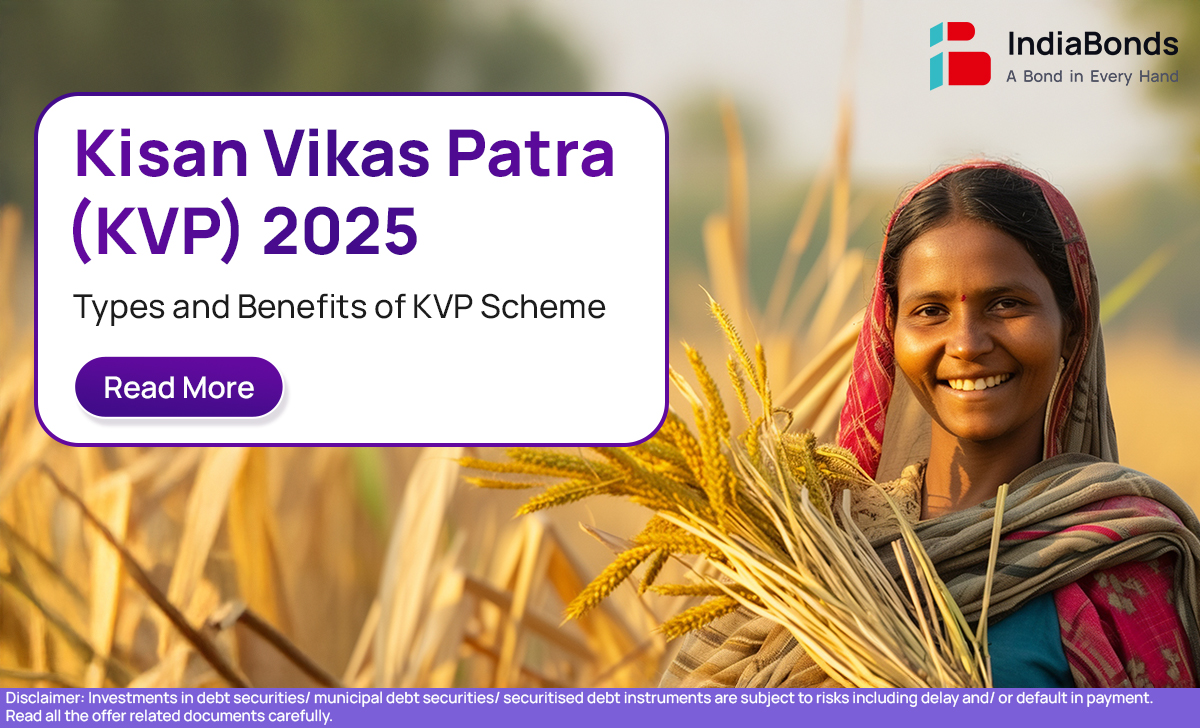
Let’s face it — managing money can get overwhelming. With so many investment options out there, it’s easy to get lost or feel unsure about where to put your savings.
But sometimes, the best option is the one that doesn’t shout for attention — something that just quietly works in the background while you go on living your life.
That’s exactly what Kisan Vikas Patra, or KVP, is.
KVP is one of those old-school savings schemes that has stuck around for a reason. It’s simple. You invest a certain amount today, and in a few years, it doubles — that’s it.
In 2025, the interest rate in Kisan Vikas Patra is 7.5% per year, which means your money will double in 9 years and 7 months. No stock market drama. No daily tracking. Just patient, predictable growth.
Because not everyone wants the risk or confusion of other investments. KVP is for people who just want their money to grow safely — whether it’s for a future goal, a rainy day, or simply peace of mind.
You don’t need to be a finance expert. You don’t need to be glued to the news. You just invest and forget about it until it matures. That’s the kind of investment many of us actually want.
KVP is flexible, and you can open it in different ways:
Whether you’re saving for yourself or planning together with someone else, there’s an account type that fits.
If you’re:
You’re eligible. Parents can also open an account in their child’s name. The only people who can’t invest are NRIs and members of Hindu Undivided Families (HUFs).
Not at all. In fact, it’s one of the simplest things you can do.
You can buy a KVP certificate from any post office or selected banks. Some places even offer online KVP purchases, which saves you the trip.
Here’s what you’ll need:
That’s it. Pay the amount, and you get a certificate (physical or digital) confirming your investment.
Let’s keep it simple. Here’s why people still put their money in KVP:
This isn’t just one of those money saving tips. It’s a long-term habit — a way to build your savings slowly and safely.
Ideally, you leave it in for the full Kisan Vikas Patra maturity period of 115 months. That’s how your money doubles.
But if something comes up, you can withdraw after 2.5 years (30 months). You can also take it out early in some cases like:
Still, if you can wait, it’s better to let it grow fully.
You can add a nominee when you open the account. This just means if something happens to you, the money will go to the person you choose — no stress, no paperwork hassles for them later. It’s a smart step.
When your KVP matures, just visit the same post office or bank where you invested. If you’ve moved, no problem. You can transfer the account and withdraw it from the new place.
Yes, very easily. You can transfer your KVP:
It just needs a simple form and ID proof. That’s all.
It’s 7.5% per year, compounded annually.
Yes, after 2.5 years. But to get double the money, stay till the full term.
Yes. There’s no limit to how much you can invest.
It’s simple, secure, gives fixed returns, and doesn’t need constant monitoring.
In a world that’s always changing, sometimes it’s nice to have one thing that just works quietly in the background.
Kisan Vikas Patra 2025 is that kind of investment. It won’t give you overnight returns. But if you’re patient, it will double your money — without any drama, without any stress.
For those of us who prefer peace of mind over high risk, that’s a pretty good deal.
Disclaimer : Investments in debt securities/ municipal debt securities/ securitised debt instruments are subject to risks including delay and/ or default in payment. Read all the offer related documents carefully.